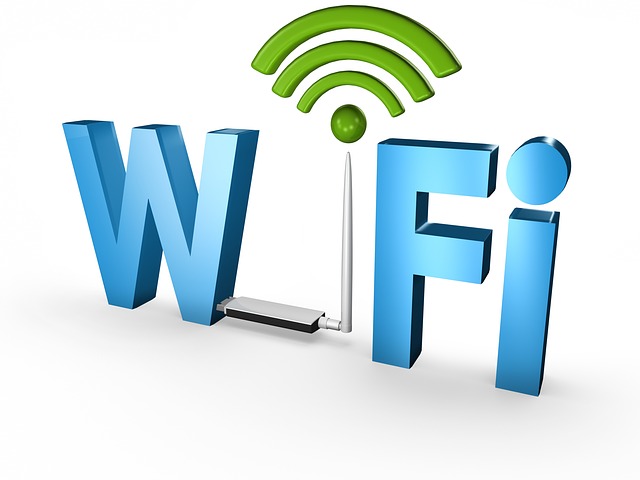
Nowaday,it is common for people to use Wi-Fi.But there are some doubts,do you know what Wi-Fi is?Do you know your Wi-fi faced with so many security threats?How can we do to make our Wi-Fi secure? And now, We will discuss these questions together.
What is Wi-Fi?
Wireless fidelity (Wi-Fi) is a type of technology that allows the wireless interconnectivity of laptops, mobile devices (such as iPads and mobile phones), and other terminals. The Wi-Fi trademark is owned by the Wi-Fi Alliance.
In the context of wireless LAN, the term Wi-Fi refers to Wi-Fi certification. Essentially, it is both a commercial certification and a wireless networking technology. Computers used to connect to the internet through network cables but now use radio waves. On commonly seen wireless routers, internet connection can be established anywhere within the effective range of its radio waves. If the wireless router connects to an ADSL line or via other internet access points, it is known as a “hotspot”.
What’s the difference between wireless networks and Wi-Fi?
Wi-Fi is a wireless network communication technology brand and an IEEE-defined wireless network communication standard (802.11). Its aim is to promote the popularization and marketization of 802.11 wireless technologies. Wireless networks are commonly referred to as Wi-Fi.
Some of you may not understand what the 802.11 wireless standards are. Here’s a diagram to help you with that:
| Timeline | Communication Standard | Settings | |||
| 1999 | 802.11a | 5GHz | 20MH | 54Mbps | NA |
| 1999 | 802.11b | 2.4GHz | 20MHz | 11Mbps | NA |
| 2003 | 802.11g | 2.4GHz | 20MHz | 54Mbps | Compatible
with 802.1 |
| 2009 | 802.11n
|
2.4&
5GHz
|
20/40MHz
|
300/450/
600Mbps
|
Compatible
With 802.11b/a/g |
| 2012 | 802.11ac | 5GHz | 80/160M | 433/867/1730Mbps | Compatible
With 802.11a/n |
Wi-Fi is transmitted by radio waves and is not perfectly secure. Now with mature application of the 802.11 i standard, WLAN security technology has increasingly improved.
| Safety strategy | Open | WEP | WPA/WPA2-PSK
|
802.1X
( WPA/WPA2- Enterprise ) |
| Link
Authentication |
Open system
authentication |
Shared key
authentication |
Open system
authentication |
Open system
authentication |
| Access Authentication
|
Has no access
authentication on its own. Pair with portal or MAC authentication. |
Not applicable
|
PSK authentication
|
802.1X authentication |
| Encryption
algorithm |
Unencrypted or RC4 | RC4
|
TKIP or AES
|
TKIP or AES
|
| Recommended
Usage scenarios
|
Places with great
user mobility like airports, bus stops, shopping malls, and conference venues. |
Networks with
Relatively low security requirements.
|
Home users or
small and medium enterprise(SME) networks.
|
Large enterprise
networks with high security requirements |
| Description
|
Use of this alone
is not enough as any wireless terminals may gain access.Portal or MAC authentication should be used with open networks. |
Less secure;
use is not recommended.
|
More secure
than WEP but does not Requirethird-party servers; lowcost. |
Very secure but
Requires third-party servers which increase cost.
|
Put simply, WPA/WPA2-PSK encryption is the most widely applied.
There are many risks of your Wi-Fi:
Wi-Fi squatting happens most often to home networks. On average, 13.3% of Wi-Fi networks experience unauthorized use.66% of public Wi-Fi networks are not safe enough.High-risk Wi-Fi networks are accessed 24 million times a day.Fake Wi-Fi networks have led to significant losses in nearly 100 cases.On average, every incidence amounts to nearly $50000 in losses.
There were so many Wi-Fi security threats.But it is impossible to avoid the internet completely in this day and age.Can’t we have both safety and convenience?Take a look at some methods to protect yourself when using Wi-Fi.
How can we make our Wi-Fi more secure?
The following are the tricks of Wi-Fi secure:
- Use WPA/WPA2 encryption for greater peace of mind.
- Hide your wireless SSID so your Wi-Fi cannot be found.
- Change your admin account password and Wi-Fi accesspassword regularly.
Choose a long, complicated password and don’t forget it!
- Enable MAC address filtering and define the devices youuse often.
By logging in to the router admin account, you can see if there are unfamiliar devices connected to your Wi-Fi. Once you discover an unknown connection, disable the connection and block the MAC address. After blocking, remember to change your Wi-Fi and router admin account passwords immediately.
- Install security software on your mobile phone or computer.
The security software can promptly block and alert you to phishing websites commonly used by hackers.
Secure Networking Suggestions
- Don’t connect to Wi-Fi automatically
Remember to disable automatic Wi-Fi connection on your mobile to avoid phishing networks. You may also change your Wi-Fi connection settings to manual and control Wi-Fi connection yourself.
- Don’t connect to unknown Wi-Fi networks.
Some resilient phishing Wi-Fi networks are named similarly to airport, cafes, and public networks. These networks go undetected and can get ahold of sensitive information like your passwords so be wary of them.
- Don’t use unfamiliar Wi-Fi networks when shopping online.
Don’t log in to payment or internet banking accounts. If you really need to, switch to mobile data before logging in.
- Use Wi-Fi security software to detect threats before connecting.
With those means, you can make your Wi-Fi more secure.
If you’re interested in Wi-Fi, welcome to contact us(blog.router-switch.com). You might be interested in the new products of Wi-Fi.
2.HUAWEI 5G MOBILE WIFI E6878-870
3.HUAWEI 5G MOBILE WIFI PRO E6878-370
Learn More:




